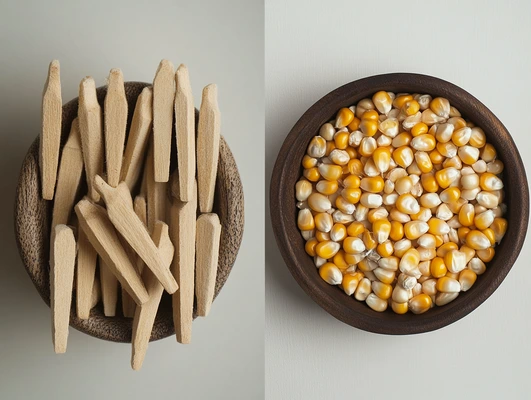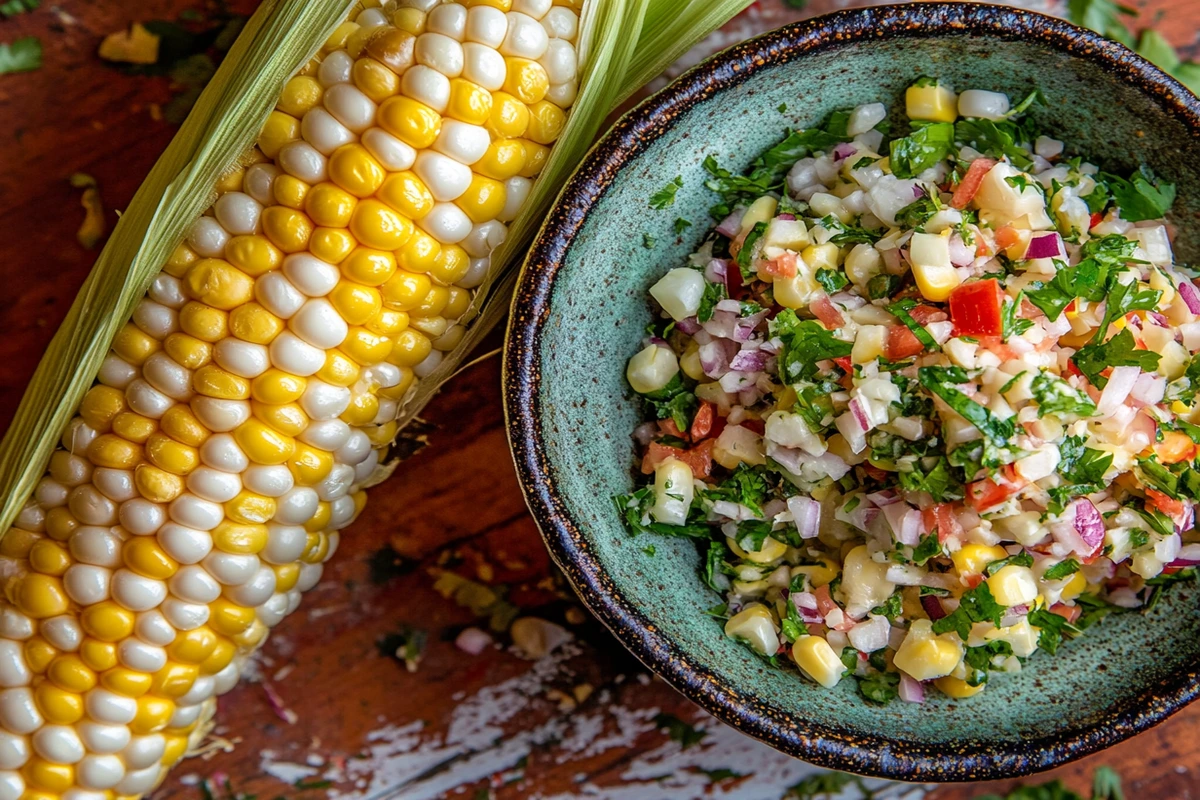Corn is one of the most versatile crops in the world, enjoyed in countless dishes and cherished for its nutritional value. Among the many varieties, shoepeg corn stands out with its delicate sweetness, tender texture, and unusual name that sparks curiosity. Let’s take a closer look at this intriguing type of corn and uncover the story behind its name.
Introduction
Corn has been a beloved staple for centuries, but among its many varieties, one holds a special charm. Known for its distinctive appearance and sweet, nutty flavor, this type of corn has intrigued both chefs and historians alike. However, one question often arises: why is it called this?
In this article, we’ll explore the unique characteristics, uncover the origins of its intriguing name, and learn why it remains a popular choice in kitchens and farms across the globe. From its history to its culinary applications, get ready to discover everything you need to know about this remarkable variety!
What is Shoepeg Corn?
Shoepeg corn is a unique variety of white sweet corn known for its small, elongated kernels that grow in a random, zig-zag pattern around the cob. Unlike traditional corn varieties with neatly aligned rows, shoepeg corn’s distinctive arrangement gives it a charming, rustic appearance.
Key Characteristics
- Irregular Kernel Arrangement
Shoepeg kernels do not form rows but grow in an uneven, staggered fashion, resembling small wooden pegs historically used in shoemaking. - Color and Texture
This variety is typically white, with a translucent sheen. Its texture is tender and crisp, offering a soft and satisfying bite. - Sweet and Nutty Flavor
Has a mild sweetness paired with a slightly nutty undertone, making it versatile for various dishes, from fresh salads to hearty casseroles.
Why is Shoepeg Corn Special?
Its unique kernel alignment and tender texture set it apart from regular corn varieties. This makes shoepeg corn a favorite in recipes requiring a delicate balance of sweetness and crunch.
Origins of the Name “Shoepeg Corn”
The Etymology of Shoepeg Corn
The name “shoepeg corn” traces back to the small wooden pegs used in shoemaking during the 18th and 19th centuries. These pegs, known as shoe pegs, were long and narrow, much like the kernels of this particular corn variety. The visual resemblance between the two inspired its unique name, linking agricultural and artisanal history.
What is a Shoe Peg?
A shoe peg was a small, tapered wooden pin used by cobblers to fasten the soles of shoes before modern adhesives and nails became commonplace. These pegs were lightweight and durable, playing a key role in early shoemaking craftsmanship. Today, while shoe pegs are rarely used, their legacy endures in the name of shoepeg corn.
Connection to the Kernel Shape
The kernels mirror the size and shape of wooden shoe pegs. Their elongated, slightly curved form and irregular placement on the cob resemble the scattered arrangement of pegs in a cobbler’s workshop. This connection gave rise to the term, blending practicality with an enduring charm.
A Name Rooted in Tradition
The name highlights the creativity of early farmers and how everyday objects inspired agricultural terminology. It also reflects the ingenuity of a time when tools and techniques were simple but deeply tied to craftsmanship and utility.

The History of Shoepeg Corn Cultivation
Tracing the Journey of Shoepeg Corn
The history of shoepeg corn spans centuries, with its origins deeply rooted in American agriculture. Below is a breakdown of its cultivation timeline and regional significance:
| Time Period | Event | Description |
|---|---|---|
| 19th Century | Introduction to the U.S. | Shoepeg corn was cultivated primarily in the southern United States, prized for its tender texture and sweetness. |
| Early 20th Century | Rise in Popularity | Became a staple crop, especially in the Midwest, due to its adaptability and culinary versatility. |
| Mid 20th Century | Adoption in Processed Foods | Widely used in canned and frozen food products, increasing its reach to households nationwide. |
| Present Day | Sustained Cultivation | Grown primarily in small-scale farms and used in niche culinary applications like casseroles and salads. |
Regional Importance
| Region | Significance |
|---|---|
| Southern United States | First major hub of shoepeg corn farming; appreciated for its resilience in warm climates. |
| Midwestern United States | Became a staple crop in this region, often used in commercial food production. |
| Northeastern United States | Gained popularity as a fresh vegetable in farm-to-table movements. |
This historical overview reflects shoepeg corn’s enduring appeal in agriculture and its role in culinary traditions across the United States.
Uses of Shoepeg Corn in Culinary Traditions
Shoepeg corn is cherished not only for its sweet and nutty flavor but also for its versatility in the kitchen. From fresh salads to comforting casseroles, its delicate texture and unique kernel structure make it a favorite ingredient in a wide range of dishes.
Common Culinary Applications
- Salads and Salsas
Adds a satisfying crunch and mild sweetness to salads and salsas. Its tender kernels pair beautifully with fresh vegetables, herbs, and zesty dressings. - Corn Casseroles
A staple in Southern cuisine, often used in creamy casseroles. Its soft texture and rich flavor make it a key ingredient in this comforting dish. - Soups and Chowders
The naturally sweet flavor enhances hearty soups and chowders. It blends well with cream, potatoes, and other vegetables, creating a flavorful base for cold-weather meals. - Side Dishes
Shines as a simple side dish when sautéed with butter, garlic, or herbs. Its subtle sweetness balances savory main courses. - Cornbread and Muffins
Ground or whole kernels are sometimes incorporated into baked goods like cornbread or muffins, adding a unique texture and flavor.
Nutritional Value
| Nutrient | Amount Per 100g | Benefit |
|---|---|---|
| Calories | ~86 kcal | Provides a moderate energy source for daily activities. |
| Carbohydrates | ~19g | Offers quick energy from natural sugars and fiber. |
| Dietary Fiber | ~2.7g | Promotes healthy digestion and helps maintain fullness. |
| Protein | ~3.2g | Contributes to muscle repair and maintenance. |
| Vitamins | Rich in Vitamin B6 and Folate | Supports brain health and red blood cell production. |
| Minerals | Contains Magnesium and Potassium | Aids in maintaining strong bones and balanced electrolytes. |
Popular Recipes Featuring Shoepeg Corn
- Shoepeg Corn Salad
A refreshing mix of corn, tomatoes, bell peppers, and a tangy vinaigrette. - Southern Corn Casserole
A creamy baked dish combining shoepeg corn, cheese, and savory seasonings. - Corn and Bean Salsa
A vibrant, healthy snack made with corn, black beans, cilantro, and lime juice.
Why is Shoepeg Corn Popular Among Farmers and Chefs?
This variety holds a special place in both agriculture and the culinary world. Its adaptability, resilience, and unique flavor profile make it a preferred choice for farmers and chefs alike.
Why Farmers Love Shoepeg Corn
Adaptable Growth Conditions
Shoepeg corn thrives in a variety of climates, making it an excellent choice for regions with moderate to warm weather. Its versatility in growing conditions ensures farmers can cultivate it successfully across diverse environments.
Disease Resistance
This variety has natural resistance to many common corn diseases, which reduces the need for extensive pest control measures. This low-maintenance quality saves farmers time, effort, and money.
High Yield and Profitability
Despite its irregular kernel arrangement, shoepeg corn delivers impressive yields. With consistent demand from consumers and chefs, it offers farmers a reliable and profitable crop that remains in steady supply year-round.
Why Chefs Choose Shoepeg Corn
Exceptional Flavor
Chefs value shoepeg corn for its sweet, nutty flavor, which enhances the taste of a wide range of dishes. Its subtle sweetness makes it a versatile ingredient in both savory and sweet recipes.
Tender Texture
The soft, delicate texture of shoepeg corn is ideal for creamy casseroles, hearty soups, and crunchy salads. This versatility allows chefs to incorporate it into a variety of culinary styles.
Visual and Aesthetic Appeal
The irregular, zig-zag kernel arrangement of shoepeg corn adds a rustic, artisanal touch to plated dishes. In farm-to-table presentations, its unique appearance becomes a talking point, elevating the dining experience.
Bridging the Gap Between Farms and Kitchens
Shoepeg corn serves as a perfect example of how agricultural excellence meets culinary creativity. Farmers appreciate its ease of growth and profitability, while chefs admire its flavor, texture, and visual charm. This dual appeal ensures shoepeg corn remains a favorite for both growers and cooks, connecting fields to tables with every cob.
FAQs
This fascinating variety often sparks curiosity among food enthusiasts due to its unique characteristics and history. Here are some frequently asked questions to help you learn more about this remarkable crop.
1. What Makes Shoepeg Corn Different from Sweet Corn?
This variety is a type of sweet corn, but it stands out with its small, elongated kernels that grow in a staggered pattern around the cob. Unlike traditional sweet corn, which has larger, neatly aligned kernels in uniform rows, this type offers a milder sweetness and a more tender texture.
2. Where is Shoepeg Corn Grown?
Shoepeg corn is primarily cultivated in the United States, particularly in the Southern and Midwestern regions. Its adaptability to various climates has made it a popular crop in these areas. It is often found at local farmers’ markets or in specialty food stores.
3. Can Shoepeg Corn Be Used in Desserts?
Yes, shoepeg corn can be used in desserts! Its natural sweetness pairs beautifully with creamy and sugary ingredients. Popular dessert options include corn pudding, sweet corn ice cream, and even corn-based cakes, where its tender texture shines.
4. How is Shoepeg Corn Different from Regular Field Corn?
Unlike field corn, which is primarily used for livestock feed and industrial purposes, this variety is grown for human consumption. Field corn is starchy and tough, while this type is tender, sweet, and ideal for dishes like casseroles, salads, and soups.s.
5. Is Shoepeg Corn Nutritionally Beneficial?
Absolutely! It is a great source of dietary fiber, vitamins like B6 and folate, and minerals such as potassium and magnesium. With its moderate calorie count and natural sweetness, it’s a nutritious addition to meals.
6. Can I Grow Shoepeg Corn at Home?
Yes, it can be grown at home in a garden or small field. It thrives with moderate sunlight, well-draining soil, and regular watering. Make sure to plant the seeds after the last frost and provide enough spacing for the plants to grow healthily.
Conclusion
This variety is much more than just another type of sweet corn—it represents a blend of history, culinary versatility, and agricultural ingenuity. Its name, inspired by small wooden shoe pegs, reflects its distinctive appearance and kernel arrangement. From its tender texture to its mild sweetness, it has carved out a special place in both kitchens and farms.
For farmers, its adaptability, high yield, and steady demand make it an invaluable crop. Chefs and home cooks, on the other hand, appreciate its ability to enhance dishes with its flavor, texture, and visual appeal. Whether used in salads, casseroles, or desserts, this remarkable corn continues to capture the hearts and palates of food lovers everywhere.
If you’re inspired to create a dish with this unique ingredient, try this Shoepeg Corn Salad Recipe for a refreshing and flavorful option. Whether you’re savoring it in a summer salad or using it in a comforting casserole, this variety connects tradition, flavor, and creativity.

